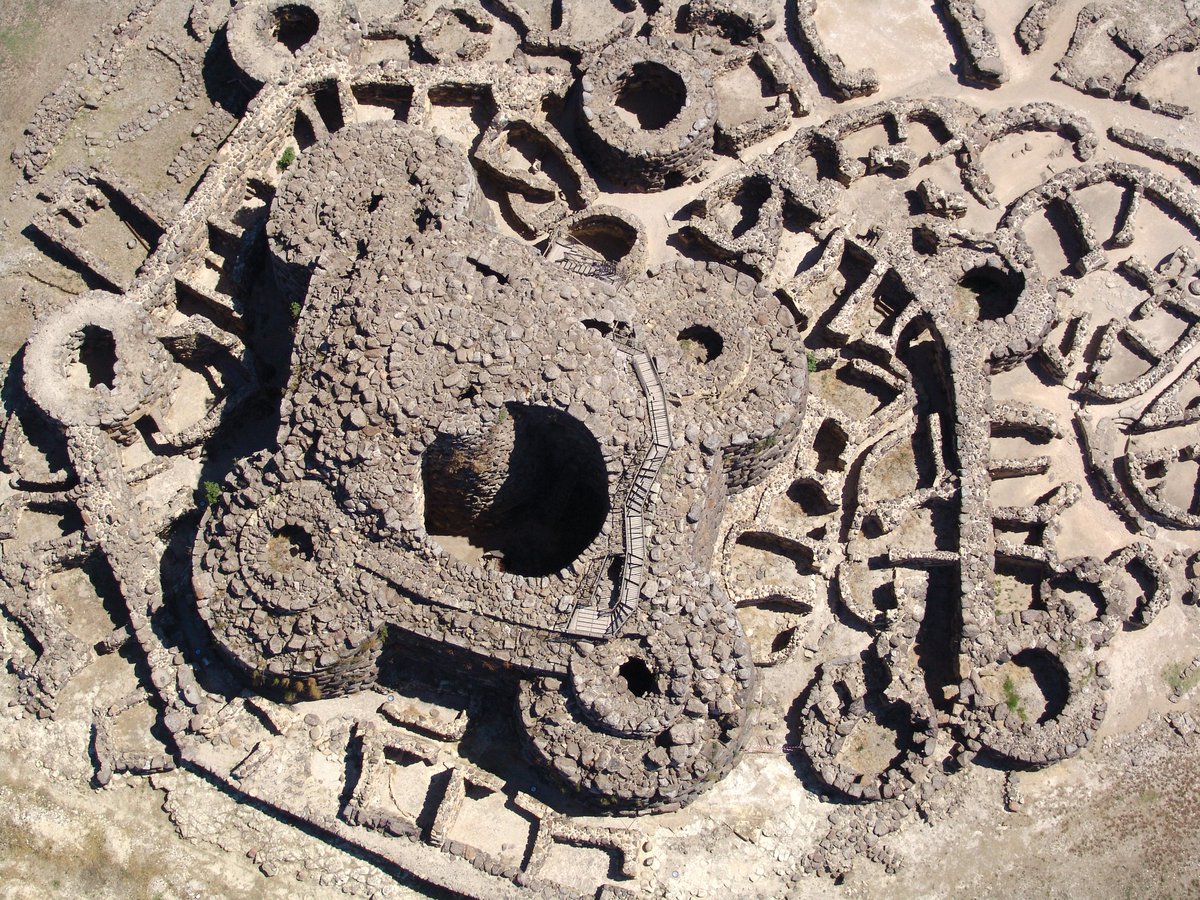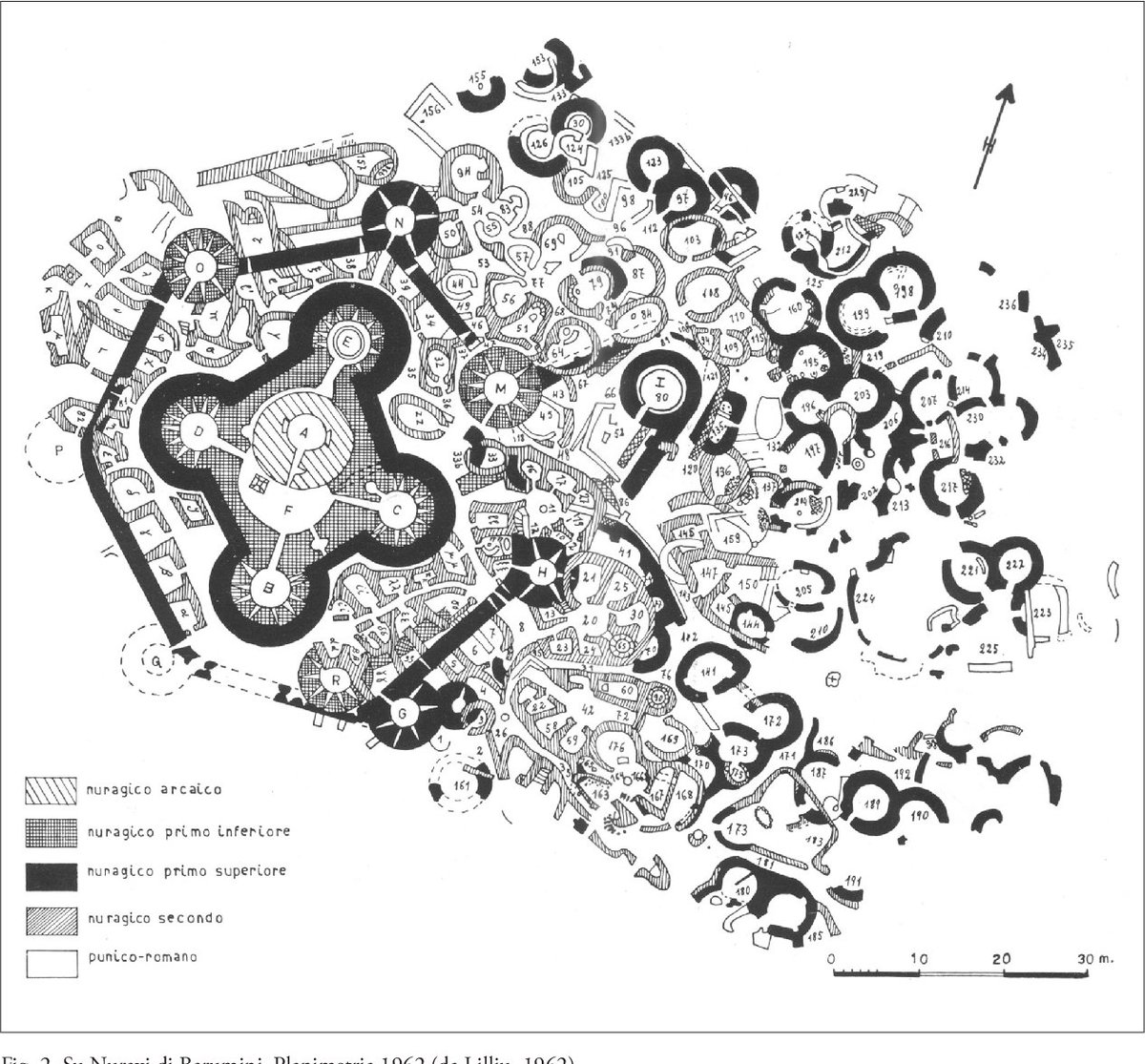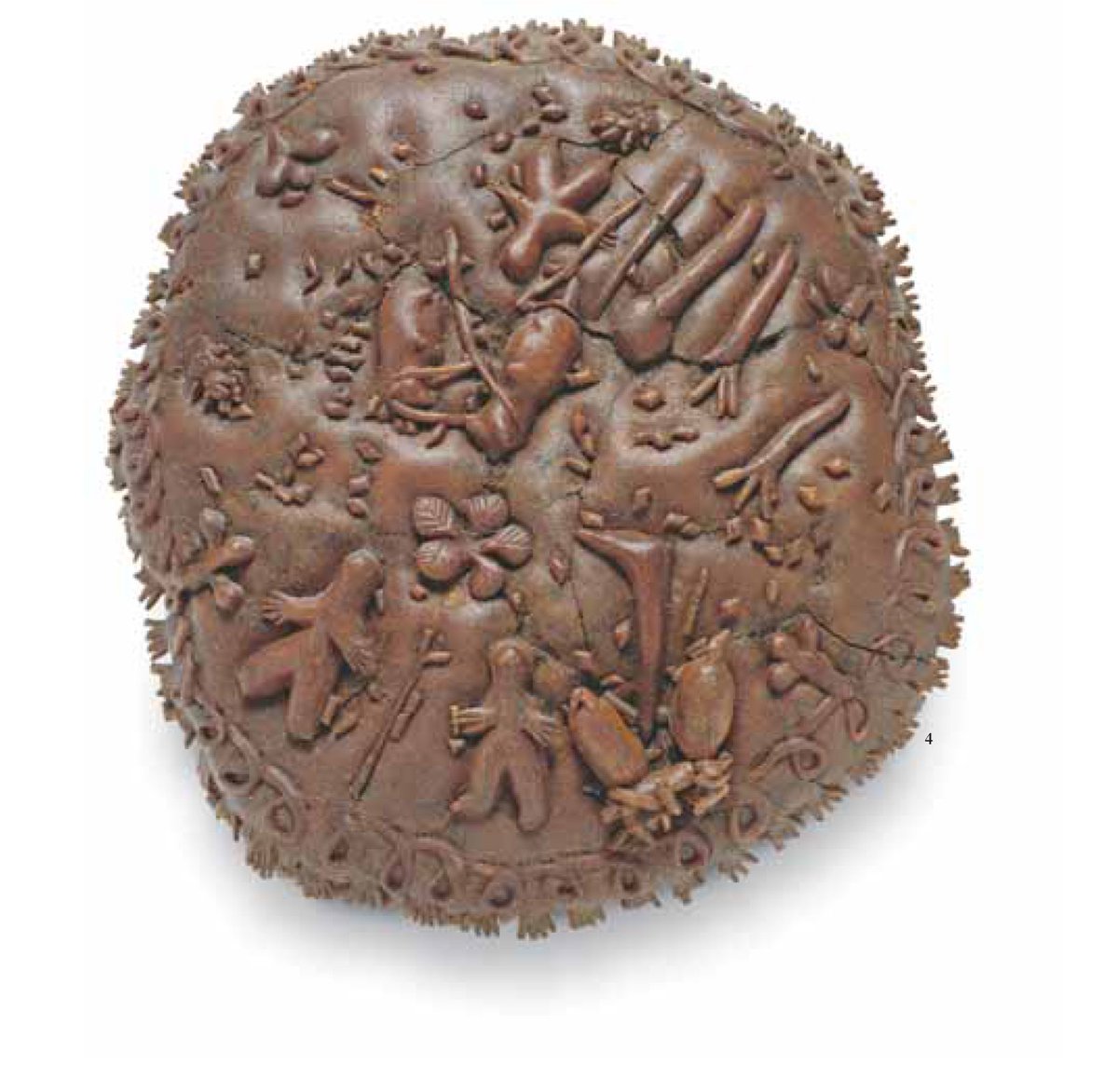
**SU NURAXI**
Thread about the most famous nuraghe of Sardinia and its village, UNESCO world heritage site in Barumini.
Thread about the most famous nuraghe of Sardinia and its village, UNESCO world heritage site in Barumini.

Barumini rises in the fertile land of Marmilla, historically known for the cultivation of wheat from prehistoric times to Middle Age and still today. The nuraghe rises near the medieval castle of Las Plassas.
The area was inhabited since a very long time but the nuraghe-
The area was inhabited since a very long time but the nuraghe-

-was at some point covered in mud. It looked like a peculiar hill, very regular. It was in the '40s of last century that Giovanni Lilliu began the works for its recovery, pulling out something much bigger than expected.
The area is filled with many other nuraghes and findings-



The area is filled with many other nuraghes and findings-




-of Prenuragic cultures and it was used even later on, by Punics, Romans and in Byzantine age. The works for the recovery went ahead for many decades, as people found ever more things.
Su Nuraxi had different phases of construction and use, starting from the Middle Bronze Age-
Su Nuraxi had different phases of construction and use, starting from the Middle Bronze Age-

-(1500-1300BCE) to the Iron Age and later on Punic-Roman.
In the first phase, the nuraghe consisted only of the major, single tower. It was built in 3 levels with terrace.
During the second phase of the Recent Bronze Age (1300-1100BCE), four more towers were added around the-

In the first phase, the nuraghe consisted only of the major, single tower. It was built in 3 levels with terrace.
During the second phase of the Recent Bronze Age (1300-1100BCE), four more towers were added around the-


-first and enclosing walls. There was also a well and each tower consisted of rooms on two levels, accessible also from the enclosing walls. The walls gave also access to the inner yard.
During the Late Bronze Age (1100-VIII cent. BCE), the nuraghe was at risk of crumbling.


During the Late Bronze Age (1100-VIII cent. BCE), the nuraghe was at risk of crumbling.



It was therefore strengthened from outside with a coat to give stability. A new access was created at a higher level. Five new towers were added, for a total of existing 7 towers, which is the eptagonal shape of today.
During this time we see the first huts around the nuraghe-
During this time we see the first huts around the nuraghe-

-in number of approximately 20, circular shaped and one next to each other, with a common inner yard (one could say similar to traditional Campidanese houses).
A tomb of the giants of the same period has been found nearby, hinting at the burial of the royal members.
A tomb of the giants of the same period has been found nearby, hinting at the burial of the royal members.

At some time during the VIII century BCE, something happened. It is not certain, probably a war between tribes or commoners vs. royals, but the nuraghe got almost completely destroyed. The towers were beheaded, the walls and some houses pillaged. The nuraghe was uninhabited for-
-some time and left in ruins. But at the beginning of the VII century BCE, people came back and built the village we know today, the huge community outside the enclosing walls. It is estimated it could count 100 people only outside the nuraghe. The houses are divided by streets-
-main and secondary ones. There were also primordial sewers.
Inside houses we found everyday utensils, for bread and for spinning, ovens. They were organised with living room, bedrooms, rooms for guests and attic. The walls were made in stone and roof with straw.
Inside houses we found everyday utensils, for bread and for spinning, ovens. They were organised with living room, bedrooms, rooms for guests and attic. The walls were made in stone and roof with straw.

An important place is the so called Sala delle riunioni, meetings' room. It's a separate building where we can find a circular bench around the perimeter (occupied by the important people of the village). There are 5 niches, the biggest is the one in front of the entrance. 

It is thought that was occupied by the leader of a now oligarchic society which sent upside down the previous monarchic one. And it is interesting to note the existence of a similar council in Middle Age. Similar rooms were found in Palmavera and Serri. 

When Carthaginians came in the V century BCE, they occupied the Marmilla and Su Nuraxi. The village didn't change drastically but population started to decrease. It was still in use during Roman times, but the Golden age was over. 

Keep an eye on this account, for a whole series of threads on Prenuragic and Nuragic Sardinia is coming 😉
• • •
Missing some Tweet in this thread? You can try to
force a refresh























